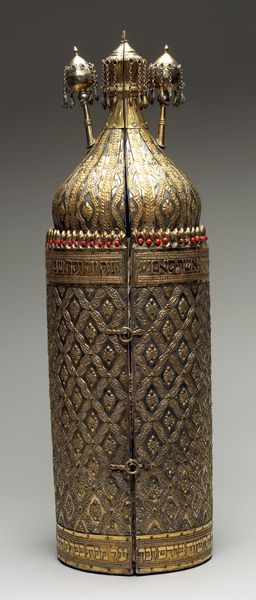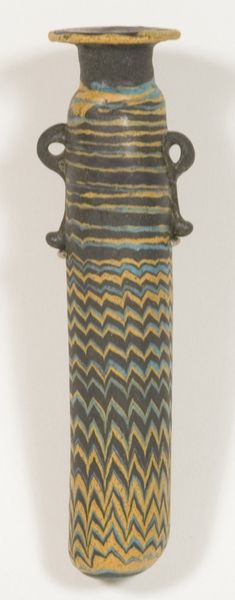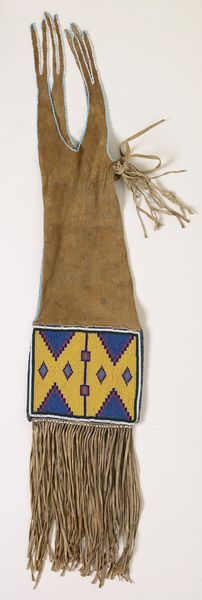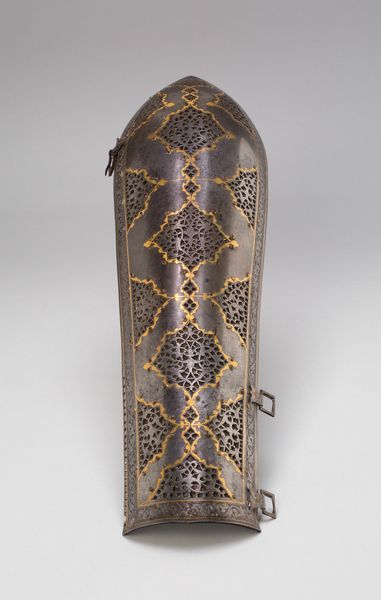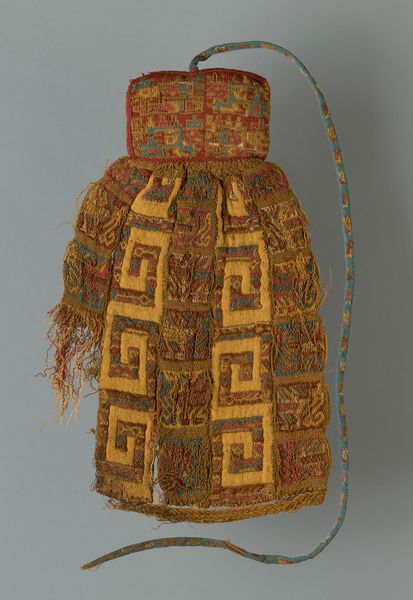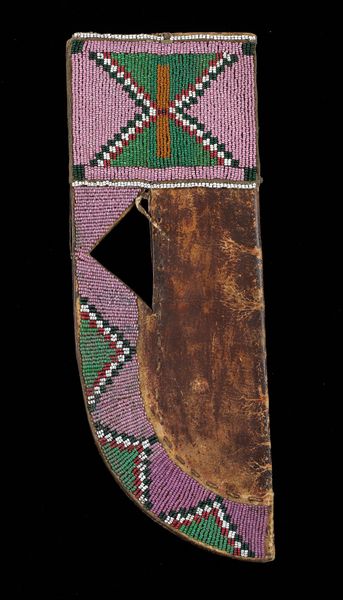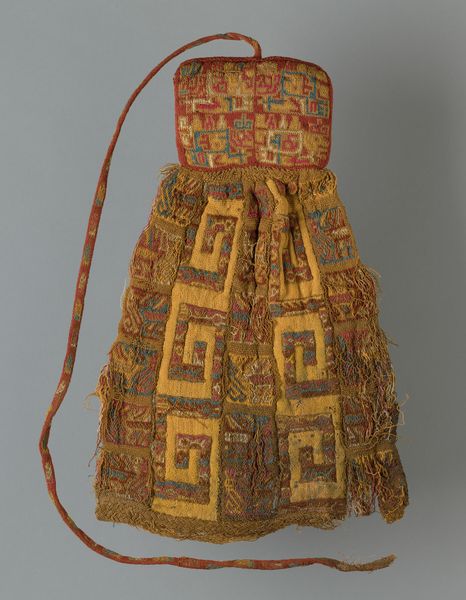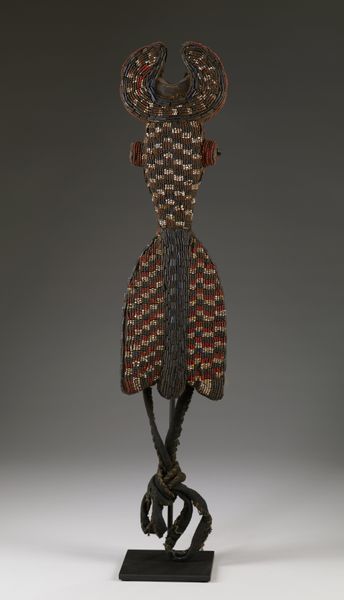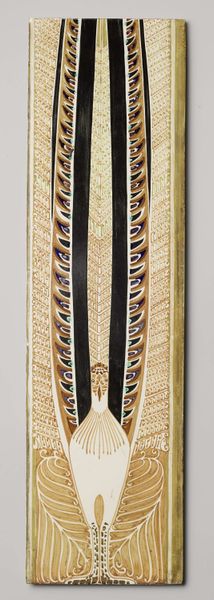
fibre-art, textile
#
fibre-art
#
textile
#
geometric
#
decorative-art
#
indigenous-americas
Dimensions: 35 3/4 x 14 3/4 in. (90.81 x 37.47 cm) (including pendants, without tassels)
Copyright: Public Domain
Editor: This is a Potawatomi Bandolier Bag, dating from around 1890. It’s crafted from wool and cotton. I'm really drawn to the complex geometric patterns and the vibrant colours – it feels both traditional and surprisingly modern. How would you interpret a piece like this? Curator: Bandolier bags like these aren't just decorative; they're powerful visual statements rooted in cultural exchange and adaptation. Consider the context: late 19th century. What was happening to Indigenous communities at this time? Editor: There was increasing pressure from settlers, forced displacement, and assimilation attempts... Curator: Exactly. These bags became important markers of identity. The geometric designs, while aesthetically pleasing, often incorporate clan symbols or reflect interactions with the natural world. And the fact that they're made using both traditional techniques and newly available trade materials like glass beads tells a story of resilience. Think about the politics of display – how does showing an object like this in a museum today affect its meaning? Editor: It could be seen as honoring the culture and artistry of the Potawatomi people, but it could also perpetuate a kind of romanticized, historical view that doesn't acknowledge their continuing presence and struggles. Curator: Precisely. The act of collecting, displaying, and interpreting these objects is inherently political. How can we, as art historians and museum professionals, ensure that we're giving voice to the communities that created them? Editor: It makes me think about the importance of consulting with Indigenous communities in the curatorial process, ensuring that their perspectives are centered. Curator: A crucial point. Seeing this bandolier bag as more than just a beautiful object – recognizing its historical context, its role in cultural resistance, and the ethics of its display – that's key to understanding its true significance.
Comments
minneapolisinstituteofart about 2 years ago
⋮
Located throughout the Plains and Upper Midwest and into Canada, the Potawatomi have an artistic tradition similar to that of the Anishinabe, and both tribes made bandolier bags. According to traditional stories, the Potawatomi are related to the Anishinabe. This object is a classic example of a Potawatomi bandolier bag. Characteristics of the style are symmetrical straps, a large loom-beaded central panel, and repeat patterning. This bandolier bag was probably made by the band of the Potawatomi located in Michigan.
Join the conversation
Join millions of artists and users on Artera today and experience the ultimate creative platform.

